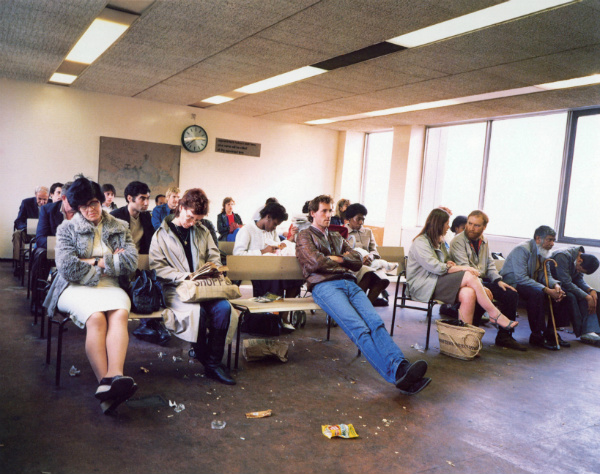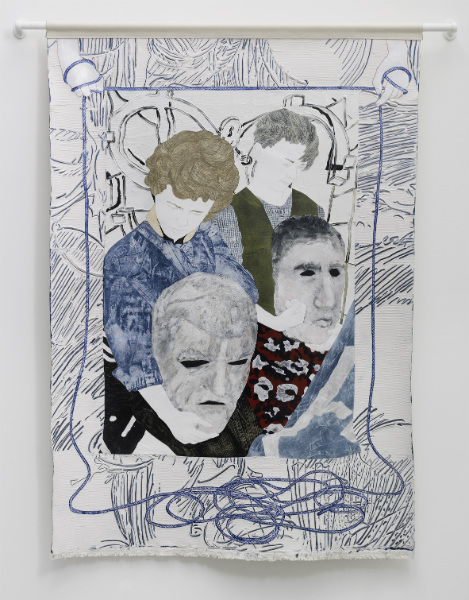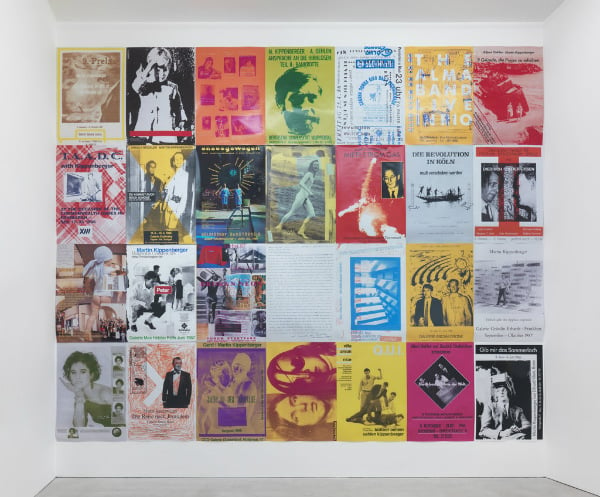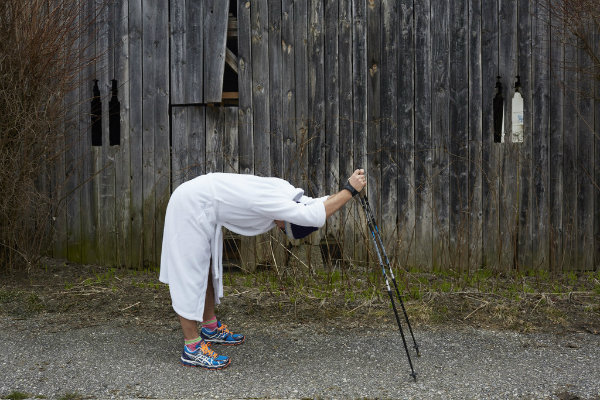Art Fairs
London Artists Priced Out of City Protest Rampant Gentrification
Frieze talks and a lot of the art looked at social and economic conditions.

Photo:
Frieze talks and a lot of the art looked at social and economic conditions.

Hettie Judah

Frieze London this year was convulsing with confused feelings about the impact of the prosperity that has sustained it and seen it grow in the twelve years since 2003. The same era in which London has become a hub for the trade in contemporary art has witnessed the city’s status as a site of art production become increasingly unsustainable. That same international wealth that supports the art market has priced all but the most fortunate artists out of the capital.
A year on from a mayoral report that stated that “Within the next 5 years, nearly a third (1101) of artists’ studios are under threat,” questions about the relationship between creativity and economics in London and other major capitals hung over the fair. This was most explicit in the Frieze Talks co-programmed by Gregor Muir, director of the ICA (sample title: “Can Artists Still Afford to Live in London?”), who also hosted a series of related discussions in his home venue (sample title: “London’s Squats and Counterculture: 1970s to Now”).
As Muir and his collocutors clarified in these talks, the deserted and mismanaged local authority buildings that fomented squatter culture in 1970s London, and the unoccupied development left by the global crash of 1987, all provided artists with cheap (or free) spaces in which to live, and make and show art. Such an opening up failed to happen during the recent crash, due to the mounting status of property—and London property in particular—as an investment.

Helen Johnson, Women discussing patriarchy (2015)
Photo: courtesy the Artist and Mary Mary Glasgow
Out on the stands, too, was evidence of fascination with the economic and social situation of the 1970s and 80s. The Australian artist Helen Johnson’s banner-like paintings, notably Women discussing patriarchy (2015), were shown at Mary Mary. Johnson’s female subjects appear within multiple framing devices suggestive of protest imagery, and are clad in the meticulously rendered snow-washed denim of the era while embroiled in acts of political engagement.
Anthony Reynolds dedicated their booth to extracts from two early series by Paul Graham: A1 The Great North Road (1981/83) and Beyond Caring (1984/85). The former is a portrait of Britain captured south to north as the artist traveled an arterial road; the latter shows dismal attendees stuck in symbolic limbo in the waiting rooms of the DHHS (the UK’s Department of Health and Social Security, broken up in 1988). Both act as reminders of the grim backdrop to an era that saw unemployment figures rise to over 3 million in 1983.
Works by women artists at Alison Jacques acted as a reminder of a time when feminist body art felt urgent and heroic. Familiar photographs of Ana Mendieta’s 1972 moustache action Untitled Facial Hair transplant hung behind Hannah Wilke’s delicate labial ceramics from 1976. Viv Albertine of The Slits—who was the subject of a Frieze talk as well as a participant in the ICA squatter discussion—was explicit in outlining the sexual threat that acted as a backdrop to Wilke’s work and which accompanied participation in the counterculture of the era. “It was a very violent time—us girls couldn’t even walk the streets safely—it’s important not to mythologise those times as something wonderful.”
https://instagram.com/p/8-wkFQh-A9/?tagged=vivalbertine
(As an aside here, it’s worth mentioning that while much press surrounding Frieze has homed in on Ken Kagami’s genital portraits at Misako & Rosen, by far the most evident body part at the fair was the female breast—and ok, some were courtesy of Sturtevant/ Lisa Yuskavage/ Laure Prouvost—but acute tit-depiction fatigue aside, it’s a reminder to keep fascination with the 1970s and 80s on the level of culture investigation rather than unquestioning revisitation.)
The squatter discussion at ICA drew together artists Neal Brown and Peter Doig, as well as Albertine and Jimmy Cauty of The KLF, all of whom had squatted in London in the late 1970s and early 80s. Pegged to a small display of restored photographs of the scene taken by Mark Cawson, there was a palpable tension in both the discussion and the photographs between the mythologizing that Albertine warned against, and the grim impact of drug use, unemployment, and precarity of life on the social margins.

Albert Oehlen, The photographic medium is justified in providing food for thought (1986), reproduced at Frieze London
Photo: by Jens Ziehe © Estate of Martin Kippenberger, Galerie Gisela Capitain, Cologne, courtesy Contemporary Fine Art Berlin
The danger implicit in the margins of an unquiet city lurked within David Wojnarowicz’s Arthur Rimbaud in New York (1978-9) series at P.P.O.W. in which the masked artist pictures himself against the backdrop of New York’s liminal urban spaces described with such violent, furious, passion in Close to the Knives (1991).
Contemporary Fine Arts Berlin clad their booth like a caution against the intoxicating excesses of the era. One side was dressed in posters from Martin Kippenberger exhibitions showing the image-aware artist at various stages of physical transformation leading up to his death at the age of 44. The other carried Jürgen Teller’s most recent series The Clinic (2015), in which snaps by the photographer’s father (who committed suicide in 1988) and the artist attending “drying out” at a clinic in Austria are interleaved.

Juergen Teller The Clinic
Photo: courtesy Contemporary Fine Arts, Berlin
Toward the end of the squatter discussion, Piers Corbyn, a housing rights activist and brother of the current leader of the Labour Party, interceded to invite the audience to celebrate the 40th anniversary of a key moment in the movement’s history the following evening. The participants, however, were reluctant to eulogise squatter culture, and the violence, sexism, substance abuse and “bad art” that came with it. As to whether artists could afford to live in London or New York? “Why would they?” said Albertine, pointing out that more space was available for less money almost everywhere else. “I don’t want to feel sorry for young people: they’ve got to work their way out of it.”
For more on Frieze Week, see What Sold on Day One at Frieze London, 15 Artists to Watch at Frieze London 2015, Helly Nahmad Stages a Mental Asylum with Jean Dubuffet Art Brut Works at Frieze Masters, Insider’s Guide to the Best and Worst of London’s Frieze Week 2015 and be sure to make use of artnet News’ 5 Tips for Every Art Fairgoer. Also, see photos from Ken Kagami’s saucy fair intervention, as well as the top booths at Frieze Masters and the Scoop on What’s Selling At Frieze Masters 2015. Also, read about how Amalia Ulman Stripped Visitors of Shoes and Phones At Frieze London and check out The Best and Worst Trends and Final Sales at Frieze London 2015.